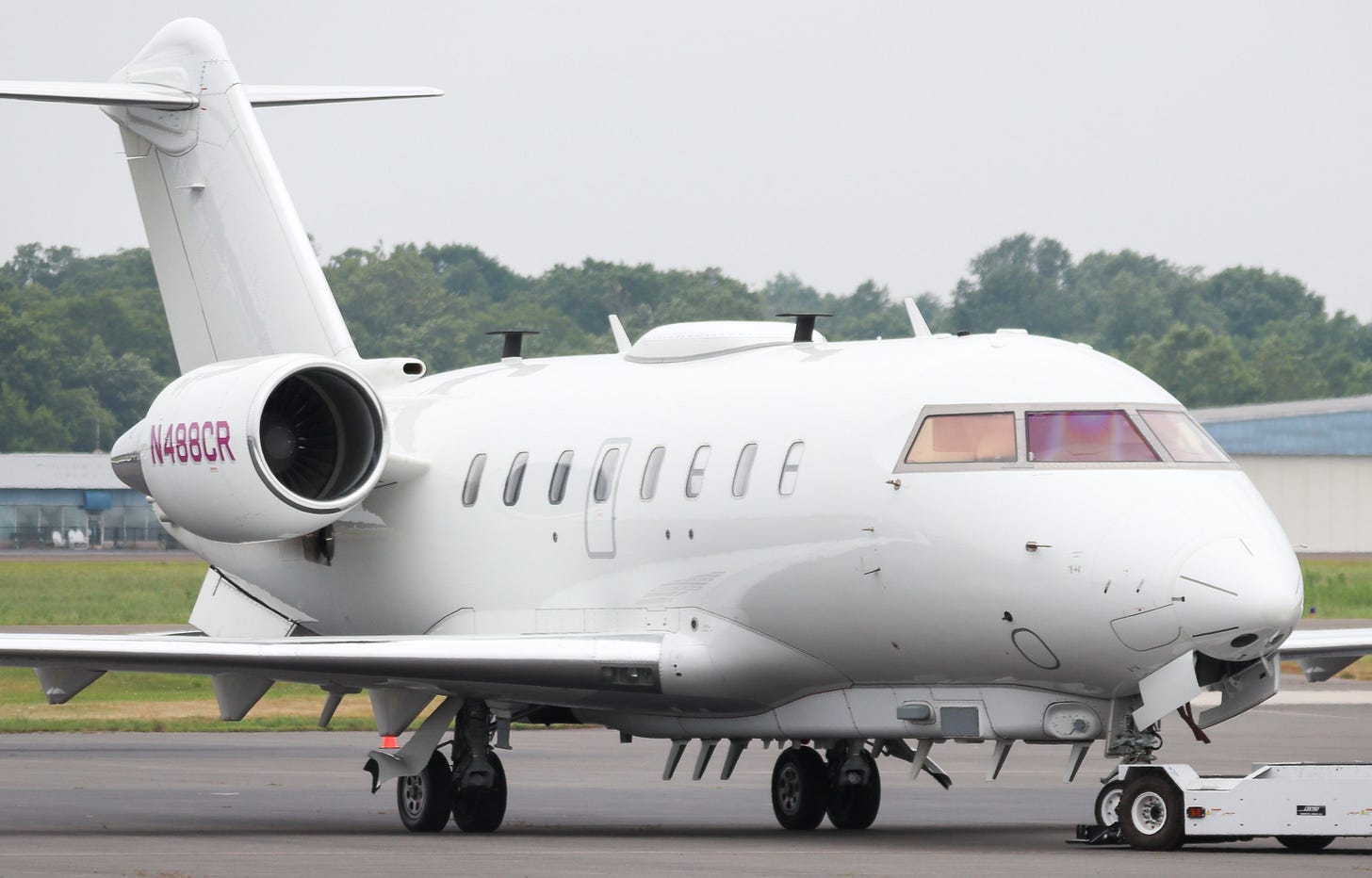The future of airborne intelligence: a 5-minute guide to spy bizjets
A quick explanation of the key capabilities, missions, and operating concepts of the business jets modified into surveillance platforms
More and more militaries, as well as contractors, are using modified business jets for airborne intelligence missions and the number of these ‘bizjets of war’ will significantly increase in the coming years. Business jet-based platforms offer several key advantages, but the relatively new platforms are often shrouded in secrecy or remain largely unknown to the public. Just like any other military program, descriptions of the jets are plagued with acronyms and unfamiliar concepts. The goal of this post is to clear up some of the key capabilities, benefits, and missions of the ‘bizjets of war’ as well as the acronyms that are fundamental to understanding why more and more of these jets will be put into active service in the years to come.
Note: there is a list of the acronyms at the bottom of this post

While the bizjets can fulfil various missions, most jets are currently flying as either signals intelligence (SIGINT) or airborne early warning and control (AEW&C) platforms. SIGINT is generally divided into two primary components: communications intelligence (COMINT) and electronic intelligence (ELINT). Jets equipped with ELINT sensors gather electronic signals emitted from adversary systems such as, among other systems, radars, command and control systems, and air defence systems. The gathered data is then used to exploit the targets and/or create an electronic order of battle (EOB). COMINT is similar to ELINT, but only signals that contain speech or text, such as radio communications, telephone conversations and text messages are included in COMINT. Both forms of SIGINT are described in more detail in this overview of the SIGINT bizjets flying for the U.S. Army:
The other mission type that is relatively commonly seen is airborne early warning and control (AEW&C). These jets are equipped with powerful radars to provide early warning of (primarily) airborne threats and a suite of sensor and communication systems to control the tactical battlespace. The AEW&C jets are generally also used as intelligence, surveillance, and reconnaissance (ISR) platforms. For the ISR missions, the onboard radars are often complemented by SIGINT sensors and/or maritime search radars. While most of the AEW&C jets can provide maritime patrol capabilities, there are also business jets modified into dedicated maritime patrol aircraft (MPA). These jets, like the one in the image above, are generally equipped with a mix of sensors, including a (maritime search) radar, SIGINT sensors, and an electro-optical infrared (EO/IR) imaging sensor.
In contrast to the missions described above, there are only very few (or possibly even no) dedicated electronic warfare (EW) platforms based on a business jet. However, the U.S. Air Force, as well as other militaries, is now developing the EA-37B, a heavily modified Gulfstream jet tasked with disruption of enemy command, control, communication, radar, and navigation capabilities through (primarily) jamming.

Compared to the older platforms, which are generally based on turboprop or old airliner-sized aircraft, business jets have three key benefits. Most importantly, bizjet-based platforms have a longer operational range and can fly at higher altitudes, increasing the time it can conduct its mission and the range of the onboard sensors. The longer range also allows the operator to stage the jets further away from contested airspace. The combination of increased range and speed of the bizjets also enables quicker deployments, decreasing reaction time and allowing operators to conduct the (often global) ISR mission with fewer airframes.
While the use of bizjets for military ISR missions is not new, the U.S. Army is using a fleet of contractor-owned, contractor-operated (COCO) bizjets to test new sensor suites, operating concepts, and platforms for their upcoming HADES ISR jets (see linked post and image above). Using contractor-owned and operated jets eases the logistics and financial burden on (in this case) the U.S. Army. In other cases, the COCO structure is used to utilize an aircraft only temporarily or to increase the secrecy of the jet and/or the program it is part of. During the testing of sensors or a new aircraft, the company that modifies the jet usually uses (temporary) civilian registrations as well but rarely in an operational environment.
Conclusion
More and more ISR bizjets are in development or already in use around the globe. Their increased range, operational altitude, and cruising speeds, as well as new sensor systems, make these jets a very capable replacement for older SIGINT, maritime patrol, and AEW&C platforms. Fueled by evolving threats from (near-)peer adversaries, technological advancements and rising geopolitical tensions, the deployment of these ‘bizjets of war’ is only set to surge in the decades to come.
Note: this post is only a 5-minute overview and is thus far from complete. Future posts about specific programs and/or bizjets (like the one embedded above) will go into more detail.
Thank you
Thank you for reading this post! As always, feel free to reach out with your thoughts, questions and/or suggestions for future posts. If you have information about ‘bizjets of war’, you can contact me via Twitter DMs (@bizjetsofwar) and/or send an email (aerospace.intelligence@gmail.com). You will always stay anonymous and the information will not be shared without explicit approval, but please do not send information you cannot or don’t want to share.
List of acronyms
AEW&C: airborne early warning and control
COCO: contractor-owned, contractor-operated
COMINT: communications intelligence
ELINT: electronic intelligence
EOB: electronic order of battle
EO/IR: electro-optical infrared
EW: electronic warfare
MPA: maritime patrol aircraft
ISR: intelligence, surveillance, and reconnaissance
SIGINT: signals intelligence




